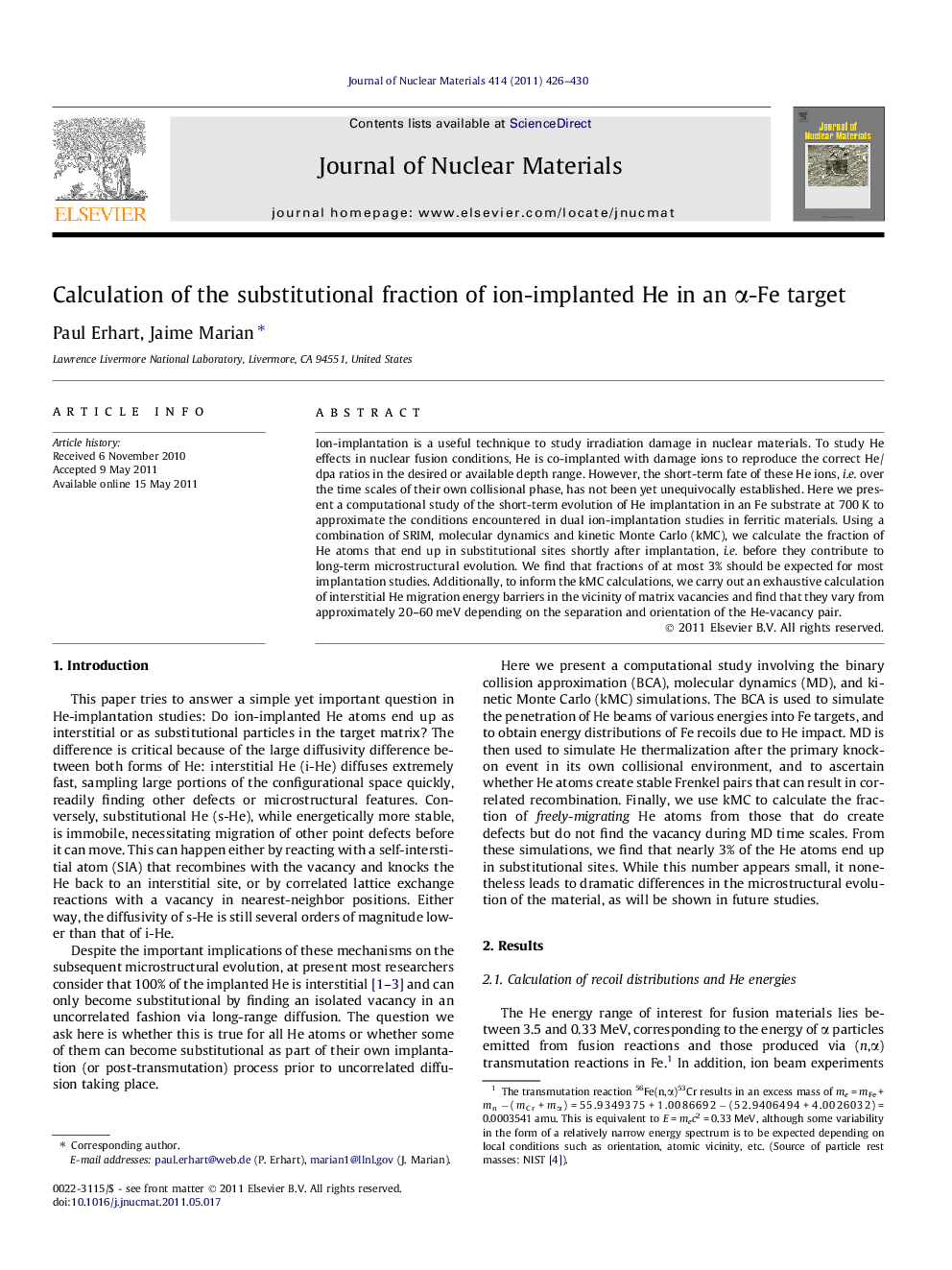| Article ID | Journal | Published Year | Pages | File Type |
|---|---|---|---|---|
| 1566794 | Journal of Nuclear Materials | 2011 | 5 Pages |
Ion-implantation is a useful technique to study irradiation damage in nuclear materials. To study He effects in nuclear fusion conditions, He is co-implanted with damage ions to reproduce the correct He/dpa ratios in the desired or available depth range. However, the short-term fate of these He ions, i.e. over the time scales of their own collisional phase, has not been yet unequivocally established. Here we present a computational study of the short-term evolution of He implantation in an Fe substrate at 700 K to approximate the conditions encountered in dual ion-implantation studies in ferritic materials. Using a combination of SRIM, molecular dynamics and kinetic Monte Carlo (kMC), we calculate the fraction of He atoms that end up in substitutional sites shortly after implantation, i.e. before they contribute to long-term microstructural evolution. We find that fractions of at most 3% should be expected for most implantation studies. Additionally, to inform the kMC calculations, we carry out an exhaustive calculation of interstitial He migration energy barriers in the vicinity of matrix vacancies and find that they vary from approximately 20–60 meV depending on the separation and orientation of the He-vacancy pair.
